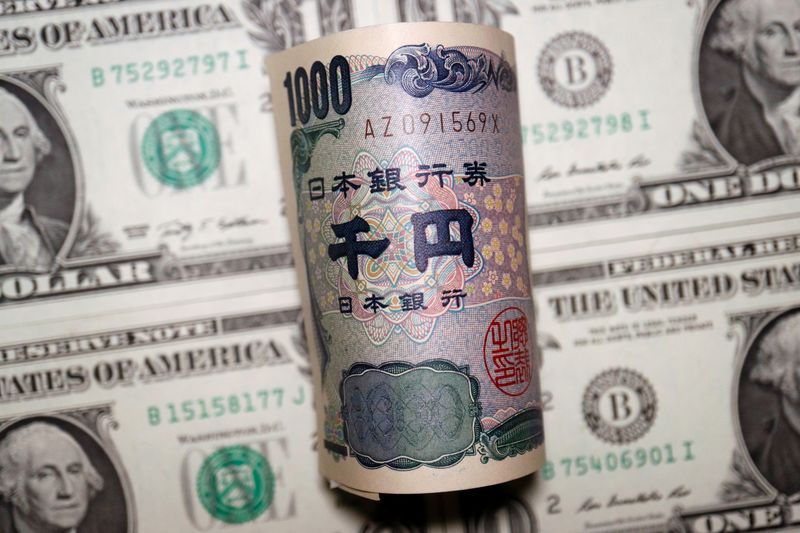By Ambar Warrick
Investing.com-- Most Asian currencies rose slightly in holiday trade on Monday, marking a positive start to the new year as investors bet on slower interest rate hikes by the U.S. Federal Reserve and a weaker dollar.
The Japanese yen extended strong gains from last week, rising 0.1% to 130.96 - its strongest level against the dollar in five months. While the currency tumbled over 15% in 2022, it regained some lost ground towards the end of the year, particularly after the Bank of Japan unexpectedly struck a hawkish chord in its December meeting.
Still, the Japanese economy is set for increased headwinds, especially as high inflation and uncertainty over the COVID-19 pandemic continue to chip away at growth. Data last month showed that Japanese consumer inflation surged to a 41-year high in November.
The Chinese yuan fell 0.1% in offshore trade, with economic readings released over the weekend showing that manufacturing activity in the country shrank even further in December, as the country grapples with an unprecedented spike in COVID-19 infections. China saw a massive spike in COVID-19 cases after it relaxed a bulk of anti-COVID measures in December.
Still, markets are positioning for an eventual economic recovery in the country, as it re-emerges from nearly three years of strict lockdown measures which had severely hampered growth.
The yuan, along with most Asian currencies, logged steep losses in 2022 as the Federal Reserve began raising interest rates. With U.S. interest rates set to remain high through 2023, this trend is broadly expected to continue.
The dollar index and dollar index futures saw little trade on Monday on account of new year holidays across most of the world. But the greenback gained nearly 8% in 2022, as the Federal Reserve embarked on one of its most aggressive rate-hike cycles to curb runaway inflation.
Still, the dollar weakened in recent months after data showed that U.S. inflation has likely peaked, which is expected to invite a slower pace of rate hikes by the Fed. The central bank already hiked rates by a relatively smaller 50 basis points in December, and is forecast to raise rates by 25 bps in February.
The Indian rupee rose 0.1% after logging bruising losses in 2022, with pressure on the currency coming mainly from India’s large trade deficit and dependence on oil imports. While the country’s economy performed well in 2022, doubts are now starting to emerge over whether this outperformance will extend into the next year.
The South Korean won fell 0.6% after data showed that the country’s trade balance remained negative in December, with both exports and imports shrinking substantially.
